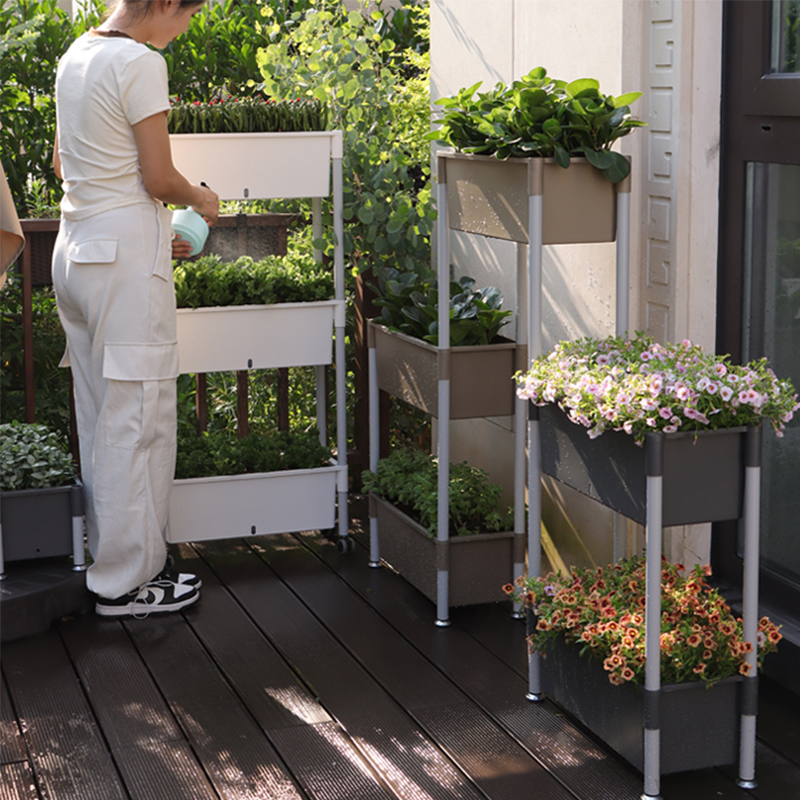Decorative pots have long been a versatile element in interior design, offering more than just a functional container for plants. They contribute texture, color, and personality to any living space, creating a subtle yet impactful aesthetic statement. Whether you're refreshing a corner of your home or adding character to a commercial setting, choosing the right pots can transform an ordinary room into a welcoming environment. In this article, we explore how decorative pots can enhance interior design while highlighting the use of eco friendly flower pots, large patio planters, and plastic picket fencing panels to create harmonious, stylish spaces.

One key trend in contemporary interior design is the growing emphasis on sustainability and environmental awareness. Eco friendly flower pots have become increasingly popular as consumers seek products that less ecological impact. These pots are typically made from renewable or recycled materials, ensuring they decompose more naturally or use fewer resources in production. Incorporating eco friendly flower pots into your design not only reflects a commitment to sustainability but also adds a unique, organic texture that complements modern interiors. These pots work well in a variety of settings, from small apartments to cozy cottages, offering a natural touch without sacrificing style.
When considering the scale of decorative pots, large patio planters deserve special mention. While traditionally used outdoors, these sizeable pots have found their way into indoor spaces, especially those with open floor plans or high ceilings. Large patio planters can serve as dramatic focal points, framing doorways or anchoring seating areas with lush greenery. Their presence adds depth and dimension to a room, balancing smaller décor elements and filling empty corners elegantly. For interior design enthusiasts looking to create an indoor garden feel, large patio planters offer the opportunity to integrate substantial plants that would otherwise be difficult to accommodate.
In addition to pots, other decorative accessories like plastic picket fencing panels can be cleverly used indoors to enhance the ambiance. Though usually associated with outdoor gardens or yards, plastic picket fencing panels have been adopted in interior spaces for their aesthetic appeal and versatility. They can be employed as dividers, wall accents, or backdrops that provide texture and a sense of enclosure without overwhelming the space. Using plastic picket fencing panels alongside decorative pots introduces an interesting contrast between organic and structured elements, which adds visual interest and a subtle rustic charm. This approach works particularly well in sunrooms, conservatories, or even modern rustic-themed living rooms.
Eco friendly flower pots come in many designs, shapes, and finishes, allowing for seamless integration into diverse interior styles. From smooth, matte surfaces to textured or patterned exteriors, these pots can highlight the natural beauty of plants while complementing furnishings and décor. When placed thoughtfully, eco friendly flower pots can create cozy nooks or bring vibrancy to neutral spaces. Pairing them with natural fiber rugs, wooden furniture, or woven textiles amplifies their effect and promotes a calm, inviting atmosphere. Their eco-conscious nature also aligns with trends that favor healthier indoor environments and sustainability-minded lifestyles.
Large patio planters, when used indoors, can serve both decorative and practical purposes. Besides their ability to host larger plants, they help define areas within open rooms or large halls. For example, placing a large patio planter near an entrance can provide an immediate welcoming impression, while grouping several of these planters can create a green partition that subtly separates living and dining spaces. Choosing planters with neutral or earthy tones enhances their adaptability to various color schemes, making them versatile assets for any interior design project. Additionally, many large patio planters are designed to be lightweight and easy to move, facilitating changes in layout or seasonal décor updates.
The combination of decorative pots with plastic picket fencing panels opens up creative design possibilities indoors. For instance, plastic picket fencing panels can be installed along a low wall or used as a frame for hanging pots, integrating greenery with architectural elements. This pairing allows designers to mimic outdoor garden features within the home, creating a refreshing indoor oasis. Moreover, plastic picket fencing panels are durable and low-maintenance, making them suitable for spaces prone to moisture, such as kitchens or bathrooms, where plants can thrive and brighten the area. Their clean lines and subtle patterns contribute an understated charm without detracting from the overall décor.
Using eco friendly flower pots, large patio planters, and plastic picket fencing panels thoughtfully can greatly enrich interior design schemes. They add layers of texture and interest while supporting functional needs such as plant care and space division. Their versatility and range of styles accommodate many preferences, from modern and small to rustic and eclectic. Incorporating these elements helps bridge the gap between indoors and outdoors, fostering a connection to nature that has proven benefits for wellbeing and ambiance.
In conclusion, decorative pots are more than just containers; they are integral pieces that enhance the visual and emotional appeal of interior spaces. Choosing eco friendly flower pots reflects a growing desire to harmonize style with sustainability. Large patio planters bring scale and presence to rooms, while plastic picket fencing panels offer creative ways to introduce structure and complement greenery. Together, these elements encourage innovative approaches to interior design that are adaptable, attractive, and environmentally mindful.

 English
English 日本語
日本語 Español
Español Deutsch
Deutsch عربى
عربى

